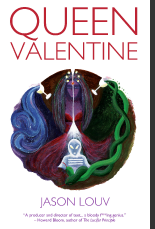
“Now, to some extent, we’re all Part Man, Part Machine, All Cop.”
Some movies ought to be left alone. Not because they’re no longer relevant… but because they’re too relevant. Jose Padiliha’s planned 2013 reboot of Paul Verhoeven’s 1987 masterwork Robocop is one such transgression of cinematic and historical decency. In 1987, Robocop was science fiction. Now, it’s the nightly news. One wonders what a Robocop reboot would have to say about a world that’s now a lot closer to the original movie than we might like to admit
Robocop was a profoundly humanist film. It was Dutch director Paul Verhoeven’s satire of American corporate culture, as he would later parody American imperialism with Starship Troopers — though the point of both movies was largely lost on American audiences easily distracted by the tongue-in-cheek hyperviolence. It was about Detroit as a microcosm of America. It was about American industry — both blue and white collar — becoming outmoded. It was about an Alvin Toffler Third Wave world in which cops, criminals and governments alike are just branches of corporations; corporations that fuel inner city chaos and wars of imperial expansion in order to keep the bottom line up. Robocop was about a world only slightly less commodified than our own — as tagged by the film’s running catch phrase, “I’d buy that for a dollar!â€
Set in an exaggerated version of the Reagan/Thatcher era, much of the film’s narrative fascination came from observing a corporate, cybernetic police state, considered to be a science fiction parody of the then-current political climate, but science fiction nonetheless. A quarter century and two Bushes later, this is no longer the case.
Now, to some extent, we’re all Part Man, Part Machine, All Cop. Though we may not be physically grafted to machines (yet), we are welded to them in every other possible way, fused to them in consciousness, dependent on them not only to support or enhance almost every part of our existences but also to uphold an increasingly restrictive social order. We live in a corporate military state in which wars are conducted by robotics, in which Predator drones patrol our far-off imperial holdings and we patrol ourselves through the voluntary surveillance system called Facebook.
We are completely enmeshed and interwoven with technology, both as consumer and producer — reduced to being subjects of the narrative of “high tech†in which there is no longer a split between human and machine, but rather a split between “human machine†and “machine machine,†like the split between Robocop and his nemesis, the ED209 walking tank. Now humanity is not something that maintains opposition to “machine†but something that is performed within the context of “machine.†Some machines are considered human (for instance, Apple products) and some are not (Microsoft products), and we are only ever as human as the electronic experiences we choose to consume. Our social identities are subsets of these machines — a carefully cultivated Google trail; a mask worn within the mainframe.
Now, the corporatized police of Robocop seem prophetically accurate — quaint even. In a 2009 TED talk, the Brookings Institution’s P. W. Singer revealed that there are 5,300 unmanned air drones and 12,000 unmanned ground systems currently deployed in the Middle East by the United States military. These numbers are projected to skyrocket in coming years — by 2015, more than half of the army will be robotic. And that’s only the U.S. — 43 countries are currently working on military robots.
The soldier of the near future will look a lot like Robocop — consider DARPA and Raytheon’s combat exoskeleton prototypes. The ED209 isn’t that different from U.S. military robots already in development or deployment like the BigDog rough-terrain robot, much publicized on the Internet, as well as lesser-known tank or pack robots like the ACER, MATILDA, TALON, MARV and MAUD, and many others. Or Japanese company Sakakibara Kikai’s Landwalker, which looks pretty much exactly like ED209. ED209’s short-circuit from the beginning of the film, when it accidentally kills a corporate lackey. This, too, is now something that has occurred. In his TED talk, Singer describes a South African anti-aircraft cannon that had a “software glitch†and killed nine soldiers. Singer calls this “unmanned slaughter,†conducted by machines that are unable to comprehend the idea of “war crime.†Even ED209 squeals like a recognizable form of life when vanquished. However, Predator and Reaper drones are completely silent, providing no warning before they strike.

We have robots in the air — unmanned drones; the newly completed Anubis assassination micro-drone. We have robots in space — the recently launched, classified X-37B plane. And we have a whole host of other current or projected future weapons seemingly culled from 1980s science fiction films — spiderweb armor, liquid armor, invisibility cloaks, drones made to look like insects.
These are not merely efficient, emotionless killing machines. They are also instruments of psychological terror. They are the new face of the Panopticon— as Jeremy Bentham once examined (to the great detriment of everybody ever since, as it has become the model that our culture is to some extent based on), those who are made to think they are being watched are just as controlled as those that actually are being watched.
“We have them thinking that we can track them anywhere,†a former top CIA operations official recently told the Washington Post, referring to the psychological tactic of leading Taliban to believe that tracking devices for Predator drones could be everywhere and in anything. “That we’ve got devices in their cars, their houses, everywhere. They’re so afraid to stay in their houses at night they’re digging foxholes to sleep in.â€
These machines are the implements of casual genocide. They are antithetical to human life, a betrayal of humanity, as they are a way to further remove the act of killing from anything that might be able to find remorse in doing so. Indeed, no one will even be able to find any meaning at all, even flat-out hatred, which would still be a human emotional response. Robotic war will be war conducted by spreadsheets. And, ultimately, such machines will hold no allegiance to any country, as they will be quickly copied by or even sold to the highest bidder.
This is where questions must be raised about the responsibility and power not only of arms manufacturers and their comrades, but also of science fiction writers and directors. Over the preceding decades, we have fetishized the machine. Art has concerned itself with the shock of new technology; with the process of becoming cybernetic. Artists have become spectators at the surgery, providing running commentary as we wait to see whether our culture will accept or reject its implants. Yet artists are more than just observers, reporters, and commentators. They are also creators. The narrative of robotic war, begun in science fiction and made real by defense contracts, might be seen, from a certain angle, as the progression of a single thing manifesting over time. Though art may be the play-acting of an idea, it can also, to some extent, be the testing of an idea — and if successful in its simulation of reality, can all too easily become reality.
On the other hand, counter-narratives to “technological progress†prove just as appalling. The complete rejection of science represented by the Sarah Palins of the world is almost inconceivably brutal dehumanization — a complete subjugation to a reactionary, patriarchal, anti-woman, anti-human “god†— every bit as frightening as the narrative of cyborg hypercapitalism.
In A Cyborg Manifesto (1991), Donna Haraway wrote, “From one perspective, a cyborg world is about the final imposition of a grid of control on the planet, about the final abstraction embodied in a Star Wars apocalypse waged in the name of defense, about the final appropriation of women’s bodies in a masculinist orgy of war… From another perspective, a cyborg world might be about lived social and bodily realities in which people are not afraid of their joint kinship with animals and machines, not afraid of permanently partial identities and contradictory standpoints. The political struggle is to see from both perspectives at once because each reveals both dominations and possibilities unimaginable from the other vantage point.â€
What would the real cybernetic shock be now? The grafting of more machine parts into our lives or the grafting of more human parts? Our lives are almost unthinkable without Internet connections, or without the oil brought home for us by the machines of war. To withdraw from either would be a far more potentially fatal shock to the system than the implantation of actual wetware cybernetics. An augmented reality optical chip, for instance, would only help facilitate our current condition, and would likely become socially enforced within certain economic brackets, just as smart phones were.
Can we create a non-alienated cybernetic world? Can we even begin to conceive of what that would look like? We can’t undo the past, but we can change the script of the future before it is acted out. Perhaps the challenge lies is finding new narratives that, instead of reacting against high technology, effectively reorient it towards serving human life — and humane values — instead of destroying them.
The Luddite back-to-the-land ethos of the early environmental movement has given way in recent decades to a vision of a more integrated future. Our most viable version of a livable future is the Green Cyborg in which technology and humanity meet halfway and start caretaking rather than dominating the Earth’s natural resources. This should be framed not as a return to neolithic, matriarchal values but as a forward synthesis of industrial technology and holistic thinking. This requires a simple shift in perspective from observing the world as a jumble of disconnected parts to observing it as an integrated system in which each part affects every other. It is a shift from seeing the world as parts in competition with each other to seeing it as parts striving for an emergent state of co-operative efficiency.
A liveable future lies not in a wholesale rejection of the cyborg process of becoming welded to high technology, but in remembering that we are already cyborgs — that we are already inseparably connected not only to each other, but to everything on the planet, including even the worst parts of postindustrial society and its byproducts and side-effects.
The challenges of this century will be cyborg ones. They will be challenges of synthesis — of discovering how to achieve balance within systems. We will work to establish an ever-evolving cybernetic balance within a frontierless, privacy-free, boundary-free, pluralistic world. This is not a New Age band-aid in which the easy answer is to simply realize that we are all one. Realizing that we are all parts of a single system is only the first step in effectively coping with and implementing that realization — work that may require more time than we have, yet which we must accomplish nonetheless. It is nothing less than the firm establishment and protection of our humanity and humaneness against all affronts to it; nothing less than remembering that we must use our tools properly lest we be used by them.
Robocop can’t be remade because it’s no longer the story of one comic book hero — it’s the story of all of us, left scratching our heads after the operation, struggling to integrate, hoping to one day remember what life was once like, left with the daily task of making sense and meaning of a mechanized world from which the only escape is that which we build from the scrapheap.















